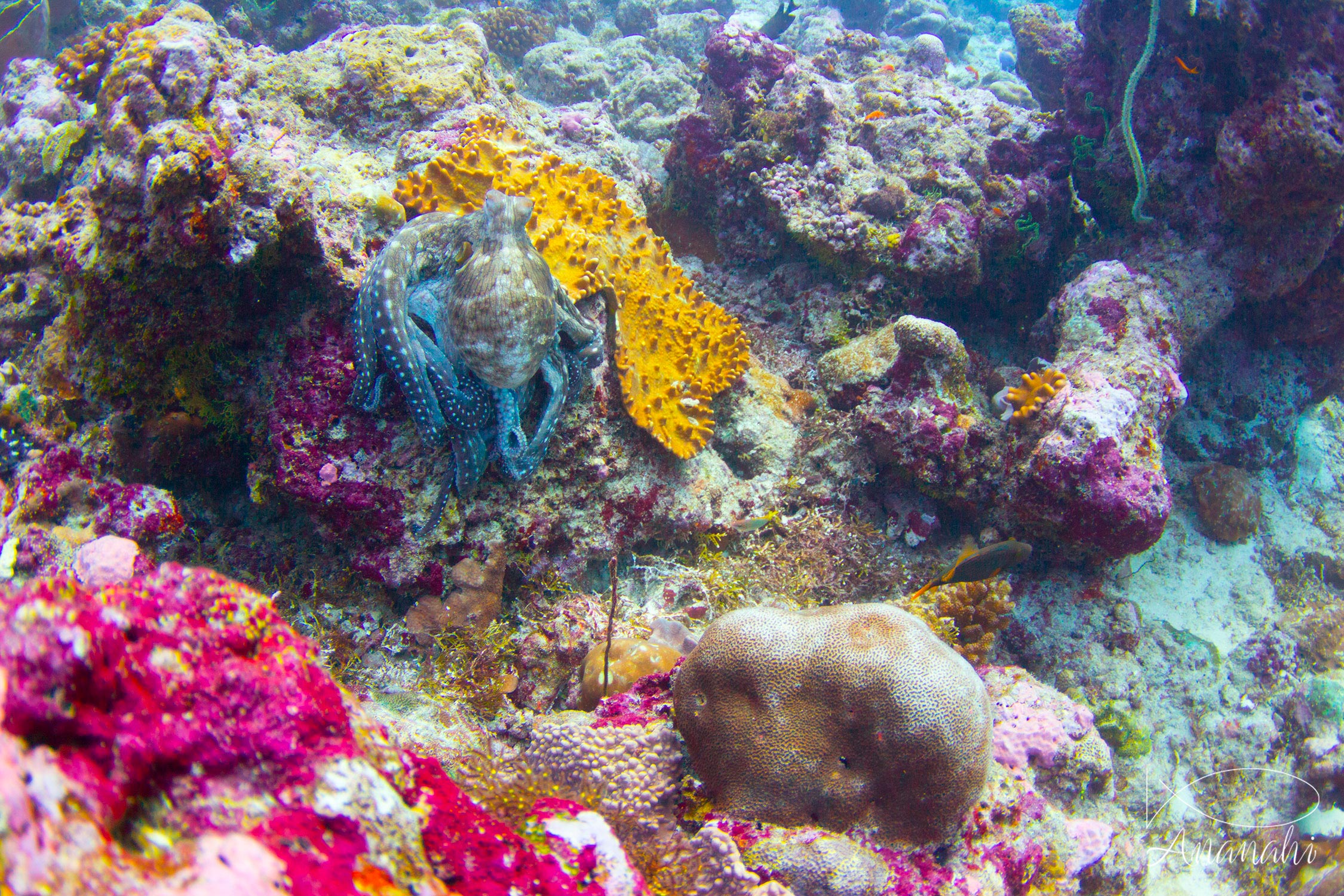
Scientific name: Octopus cyanea
Size: Coat up to 6.3 inches and arms up to 31.5 inches
Color: Red brown, but can change texture and color
Distinguishing feature: Average length less than 1m with arms 4 times larger than the coat. Brown ocelli circled with clear at the base of arms 2 and 3. Red brown with possible white spots.
Where did we see it: Bali and Gili, Zanzibar, Thailand, French polynesia, Mexico, Mayotte, Maldives, Raja Ampat

Scientific name: Octopus cyanea
Size: Coat up to 6.3 inches and arms up to 31.5 inches
Color: Red brown, but can change texture and color
Distinguishing feature: Average length less than 1m with arms 4 times larger than the coat. Brown ocelli circled with clear at the base of arms 2 and 3. Red brown with possible white spots.
Where did we see it: Bali and Gili, Zanzibar, Thailand, French polynesia, Mexico, Mayotte, Maldives, Raja Ampat
To reproduce, the male repeatedly touches the woman. Initially to confirm the sex, then to deposit spermatophores that will move along the female's arm and release the spermatozoa. This several times between 1m30 and 3h.
The female dies of exhaustion and hunger 10 days after the last hatching because she does not eat anymore from 2 weeks before the laying. The male dies of senescence (slowing of the vital activity) a priori because of the optical gland which controls the reproduction and whose hyperactivity after this one would trigger this decadence.
The species therefore lives between 12 to 15 months.
This species is - in addition to being remarkable for its changes of livery and texture - extremely intelligent: capable of strong memorization, decision making, emotional reactions, learning by observation and reactions of discrimination. >
Researchers also come to think that man is no longer the only conscious being and that octopus has joined this group.










Some sharks can stay motionless on the sand (white tips reef sharks, nurse sharks, etc.).
These sharks don't have to swim to bring oxygen to their gills like other sharks (grey, hammerheads tc.)
Mammals have a horizontal tail.
Fishes have a vertical fin.
We can hear the bull shark is very dangerous because of attacks near La Réunion island.
However, tens of them are living at 600 feet from the famous beach of Playa Del Carmen in Mexico. And there are no attacks.